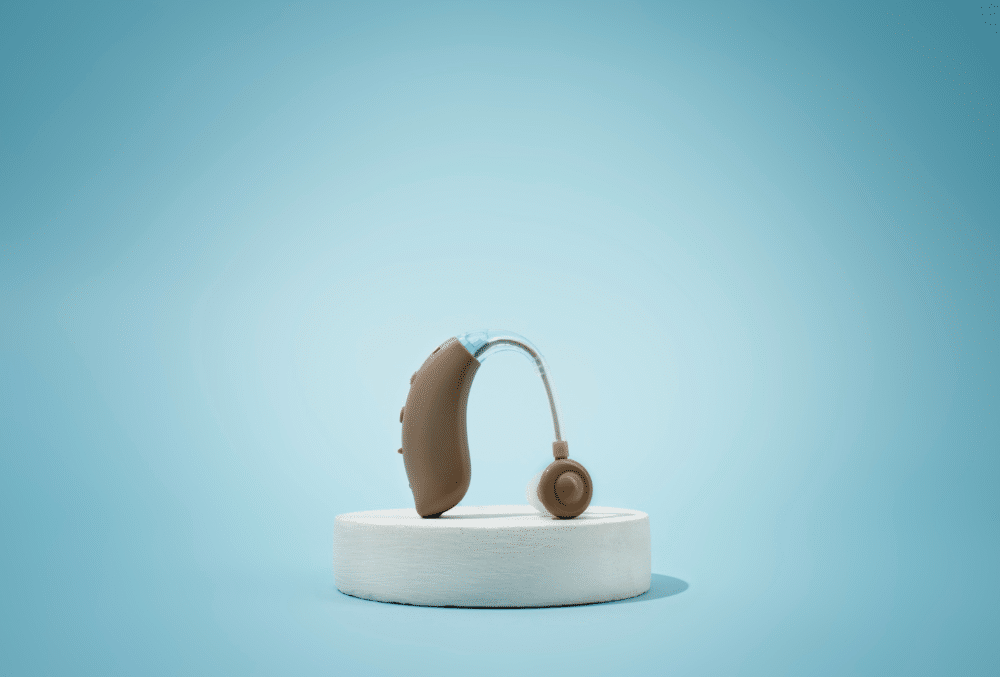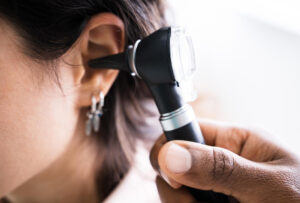Choosing a hearing aid is a personal decision, and the array of styles and technologies available can sometimes feel overwhelming. Among the most popular and versatile options are receiver-in-canal (RIC) and behind-the-ear (BTE) hearing aids. Both digital hearing aids offer excellent sound quality and features, yet their design, placement, and suitability for different hearing losses vary significantly. Understanding these distinctions is key to finding the device that best aligns with your lifestyle, aesthetic preferences, and unique auditory needs.
What Are RIC Hearing Aids?
Receiver-in-canal hearing aids are a popular and discreet style characterized by a tiny case that sits behind the ear, connected by a thin wire to a miniature receiver (speaker) that rests directly in the ear canal. This design allows for a very open and comfortable fit in the ear, as the ear canal is not fully occluded. The placement of the receiver closer to the eardrum can often provide a more natural sound quality, as sound travels a shorter distance. RIC hearing aids are versatile and can accommodate a wide range of hearing loss levels, from mild to severe, making them a flexible choice for many users.
RIC Hearing Aids: Advantages and Disadvantages
RIC hearing aids offer a compelling blend of aesthetics and functionality, making them a favored choice for many. However, they also come with specific considerations, influencing what might be the best fit for different users.
Advantages:
- Discreet Design: The small unit behind the ear and the thin wire make them very discreet, often barely noticeable.
- Natural Sound Quality: The receiver’s position in the ear canal can deliver sound more directly and naturally.
- Open Fit: Often allows for more natural airflow into the ear canal, reducing the “plugged up” feeling.
- Versatility: Suitable for a wide range of hearing loss severities.
- Easier Maintenance: The receiver can often be replaced by a professional without sending the entire unit for repair.
Disadvantages:
- Trickier to Handle: Due to their smaller size and the thin wire, RIC hearing aids can sometimes be trickier to handle, especially for individuals with limited dexterity or visual impairments.
- Earwax and Moisture Exposure: The receiver in the ear canal is more exposed to earwax and moisture, potentially requiring more frequent cleaning.
- Fragile Wire: The thin wire connecting the case to the receiver can be delicate and may need occasional replacement.
- Visibility: While discreet, they are slightly more visible than completely-in-canal (CIC) or invisible-in-canal (IIC) styles.
What Are Behind-the-Ear Hearing Aids?

Behind-the-ear hearing aids are a classic and robust style where all the electronic components, including the microphone, amplifier, and speaker, are housed in a durable casing that rests behind the ear. Sound is then channeled down a clear plastic tube into a custom-made earmold or a standard dome placed inside the ear canal.
BTE hearing aids are known for their power and durability, making them suitable for virtually all types of hearing loss, including profound levels. Their larger size allows for more powerful components, longer battery life, and often easier handling, especially for individuals with dexterity challenges.
Behind-the-Ear Hearing: Advantages and Disadvantages
BTE hearing aids are renowned for their reliability and broad applicability, serving as a dependable solution for many with varying degrees of hearing loss. Yet, their design also introduces a few trade-offs.
Advantages:
- High Power Output: Excellent for severe to profound hearing loss due to larger amplifiers and speakers.
- Robust and Durable: The components are housed in a sturdy case, making them less susceptible to damage from moisture or impact.
- Longer Battery Life: Generally accommodates larger batteries, leading to extended usage time.
- Easy Handling: Larger size can be easier to manage for individuals with limited dexterity.
- Connectivity: Often better able to accommodate advanced connectivity features like telecoils and direct audio input.
- Suitable for Growing Ears: Earmolds can be easily replaced as a child grows, making them ideal for pediatric users.
Disadvantages:
- More Visible: Their larger size makes them more noticeable behind the ear compared to smaller styles.
- Less Natural Sound (Initially): Sound travels through a tube before reaching the ear, which some users might perceive as slightly less natural initially.
- Occlusion Effect: Custom earmolds can sometimes create a “plugged up” sensation for some users.
RIC vs BTE: Which Is Better?
While both RIC and BTE hearing aids offer effective amplification, their design philosophies lead to distinct differences in user experience, capabilities, and suitability for various needs.
Design and Size
The most apparent difference lies in their physical design and size. RIC hearing aids are typically smaller and more discreet, with the main body resting behind the ear and a nearly invisible thin wire leading to the receiver in the canal. This makes them a popular choice for those prioritizing aesthetics and a less obtrusive fit. A prime example of this innovation is the Styletto IX hearing aid, which was recently named a winner of the 2024 Hearing Technology Innovator Awards™. As the world’s slimmest and most innovative Slim-RIC hearing aid, the Styletto IX is specifically designed for style-conscious wearers. This distinctive and refined device not only offers a sleek appearance but also delivers exceptional speech clarity, even in noisy environments, providing a substantial improvement to their overall hearing experience.
BTE hearing aids, conversely, tend to be larger, with the entire electronic unit encased behind the ear. While this design is more noticeable, their robust casing and larger components allow for greater power and durability. This makes BTEs particularly well-suited for individuals with profound hearing loss or those who require a more rugged device.
Capabilities
Due to their design, RIC and BTE hearing aids offer varying capabilities. RIC hearing aids often provide a more natural sound experience because the receiver is placed closer to the eardrum, and their open fit can reduce the occlusion effect. They’re excellent for capturing high-frequency sounds more effectively.
BTE hearing aids, however, are unparalleled in power and can handle the most severe hearing losses. Their larger size allows for more powerful processors and speakers, making them a go-to for those who need significant amplification. They’re also often preferred for children due to their robust nature and the ease of replacing earmolds as the child grows.
Amplification and Programmability
Both RIC and BTE hearing aids utilize digital amplification, meaning they convert sound waves into digital signals for processing. However, the power output and the range of programmability can vary. BTEs, with their larger components, can deliver higher levels of amplification, essential for profound hearing loss.
RIC hearing aids also offer advanced programmability and precise sound shaping, but their power output might be limited for the most severe cases. Both styles benefit from multiple program settings for different listening environments, which can be customized in the hearing health center, though the sheer power potential remains a distinction.
Price
Generally, the initial purchase price between RIC and BTE hearing aids can vary, often depending more on the specific technology level (basic, mid-range, advanced) within each style rather than the style itself. Historically, BTEs might have been slightly less expensive for basic models due to simpler construction.
However, as RIC technology has become more widespread and sophisticated, their prices can be comparable to or even exceed BTEs, especially for models with advanced features. When considering price, it’s essential to look beyond the initial cost and factor in the long-term benefits, durability, and how well the device addresses your specific hearing needs and lifestyle.
Finding Your Perfect Match: Tailoring Hearing Solutions
Ultimately, the choice between RIC and BTE hearing aids is a deeply personal one, guided by your unique hearing loss, lifestyle, and preferences. There is no single “best” option, but rather the best fit for you. By carefully considering the discreet design and natural sound of RICs against the power and durability of BTEs, you can begin to narrow down your choices.
Consulting with a qualified hearing care professional is an invaluable step in this process. They can perform a thorough assessment of your hearing, discuss your specific needs and concerns, and help you try on different styles to find the hearing aid in the Philippines that truly enhances your connection to the sounds of life.









